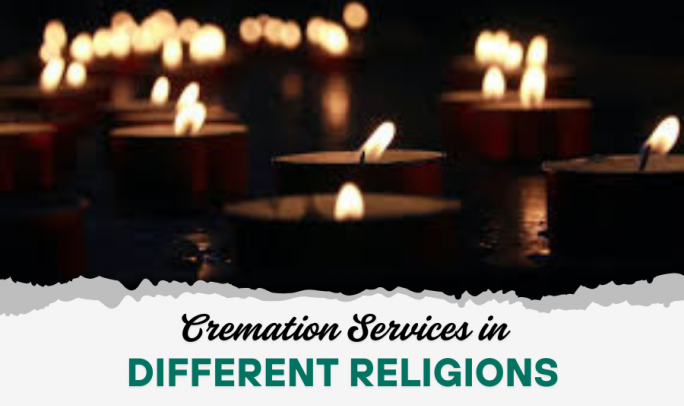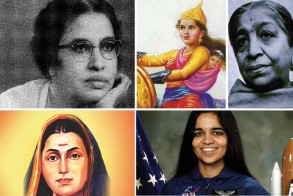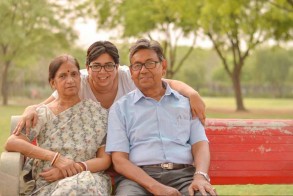Lastjourney Blog
Exploring Cremation Services in Different Religions

 Table of Contents
Table of Contents- How do different religions see Cremation as an important ritual after the death of a person?
- What is the right way to perform a dignified farewell for the departed soul away from the myths and misunderstandings?
- After how much time, the cremation rite should be performed after demise?
- What is the faith about death in Hinduism
- Final Words
When a loved one passes away, the family is left in a depressing and hopeless state. The funeral rites and customs are essential to ease the unbearable sadness of losing a loved one. One of those necessary last rites that give the deceased a respectable farewell and bring comfort to the bereaved is cremation.
Cremation is the process of burning a deceased person's body to ashes. It is a customary funeral rite in many cultures and faiths worldwide. Cremation services offer the equipment and staff needed to perform cremations in a dignified and solemn way. We'll look at why cremation services are a crucial component of funeral customs across a range of religions.
Here is the significance of the Cremation Rite after death in different religions.
How do different religions see Cremation as an important ritual after the death of a person?
In several major religions, such as Buddhism, Sikhism, Jainism, and Hinduism, cremation has religious and spiritual importance.
Hinduism
Cremation is the customary and recommended way to respect the deceased in Hinduism. The followers of Hinduism hold that the body is not the everlasting soul's transitory home. To release the soul from its earthly existence, the body is surrendered to the fire god AGNI during cremation. According to its karma, the cremation ritual enables the soul to either be reunited with the divine or reborn into a new life. Cremation services are essential because Hindus carry out several ceremonies and rituals during the cremation ceremony.
Buddhism
Buddhism, which emphasizes the fact of the transience of life, also frequently practices cremation. The deceased body remains no loger the home of the soul hence it does not fulfill its function after death. The idea that death is merely a passage rather than an end is reflected in Buddhist funeral customs. The release of attachment to the physical body is symbolized by cremation. It is said that the ashes serve as a reminder of how fleeting life is. The facilities to perform the rites appropriately are provided by Buddhist cremation services.
Sikhism
Cremation is a prime example of Sikhism's belief that the soul lives on, although the body dies. Prior to the cremation, there are hymns, prayers, and meditation during the antim sanskar funeral ritual. Some of the ashes are frequently submerged in India's holy rivers. This procedure is made possible by Sikh cremation services.
Also Read, Importance and benefits of Navagraha Shanti Pujan
Jainism
Cremation is another method used by Jains to cut off all connections to the fleeting, material body. Their cremation rites allow for total release from physical worries and purify the soul. To provide the right facilities, Jain cremation services are essential.
Catholicism
The approval of cremations by the Catholic Church came very recently. Nonetheless, there are rules that must be adhered to. The remains of a Catholic who is cremated must be kept in a "sacred place," such a church cemetery, rather than being scattered, maintained in a family member's house, or infused into a tangible object.
Mormon
Cremation is not forbidden in Mormonism, although burial is encouraged. The church will still perform the complete funeral rites for a Mormon who is cremated.
Baptism
Baptists have the option of cremation or burial. Both are completely recognized as bodily dispositions in the church.
What is the right way to perform a dignified farewell for the departed soul away from the myths and misunderstandings?
Here are the key tasks that the lead mourner should perform.
- The lead mourner, with the help of other male family members, washes the deceased body with ghee, honey, milk, and yoghurt etc.
- It is necessary to place essential oils on the head of the deceased body.
- The hands of the deceased body should be placed in such a position that the palms are downwards and the toes of the feet should be tied together.
- According to the religious rules, the deceased’s body should be dressed in new and white clothes.
- For the dignified cremation of the father, a floral garland should be placed on the perfectly wrapped deceased body. The pindas 'rice balls' can also take place close to the remains.
- A lamp should be placed close to the head of the dead body. The lead mourner should sprinkle Ganga Jal on the body to make it sacred before igniting the pyre.
After how much time, the cremation rite should be performed after demise?
According to Hindu death rituals, the body should be cremated before sunset. Hence, the remains can be kept at home for 3-4 hours maximum after demise.
Also Read, Top 10 Condolence Messages for Every Situation
What is the faith about death in Hinduism
In Hinduism, the faith regarding the demise is centred around reincarnation. The followers of Hinduism believe that when a person dies, the soul takes rebirth in a different form or body. According to the belief, the deceased person loses only their physical body, but the soul remains and continues to recycle until it obtains peace and salvation. This entire cycle of birth and death can take many lifetimes. And it is believed that with each passing life, the soul strives to move closer to Brahma, the Hindu God. Along with it, the faith regarding death in Hinduism states that the soul’s next incarnation will be based on the actions performed by the person in the previous life, which is called Karma.
Final Words
It's tough to say a final goodbye to the beloved one, along with arranging the dignified cremation rite for the departed soul. To lessen this grief and mourn the loss in peace, a bereaved family requires professional help and guidance.
Several such organisations lead the mourners in conducting a well-organized and dignified Cremation Ritual. From booking the cremation venue to collecting the last memories in the form of ashes, a funeral director team will stay with the grievers at each step of the ritual.
Your email address will not be published. Required fields are marked *












